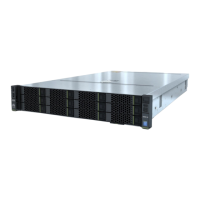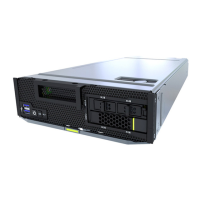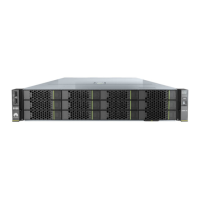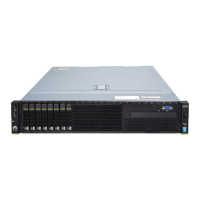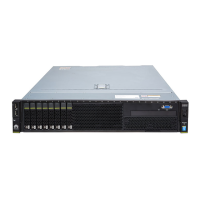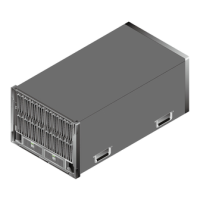iv. Click OK.
The server starts to be powered on.
– Use the iBMC CLI.
i. Log in to the iBMC CLI.
For details, see 10.4 Logging In to the CLI.
ii. Run the following command:
ipmcset -d powerstate -v 1
iii. Type y or Y and press Enter.
– Use the Remote Virtual Console.
i. Log in to the Remote Virtual Console.
For details, see 10.3 Logging In to the Desktop of a Server.
ii. On the KVM screen, click
or on the toolbar.
iii. Select Power On.
A dialog box is displayed.
iv. Click Yes.
8.3.2
Power-O Procedure
● Powering o a server node will interrupt all services and programs running on it.
Therefore, before powering
o a server node, ensure that all services and programs
have been stopped or migrated to other server nodes.
● The
"power-o" mentioned here is an operation performed to change the server node
to the standby state (the power indicator is steady yellow).
● After a server node is powered o forcibly, wait for more than 10 seconds for the server
node to power o completely. Do not power on the server node again before it is
completely powered
o.
● Forced power-o may damage user programs or unsaved data. Exercise caution when
performing this operation.
The server node can be powered
o in any of the following ways:
● Power o the chassis.
The server node will be powered o along with the chassis.
● When the server node is in power-on state, pressing the power button on the
server node front panel can power o the server node gracefully.
If the server node OS is running, shut down the OS according to the onscreen
instructions.
For details, see 2.1.2 Indicators and Buttons.
● When the server node is in power-on state, holding down the power button
on the server node front panel for six seconds can power o the server node
forcibly.
For details, see 2.1.2 Indicators and Buttons.
● Use the iBMC WebUI.
FusionServer Pro XH321 V5 Server Node
Maintenance and Service Guide 8 Parts Replacement
Issue 17 (2021-03-09) Copyright © Huawei Technologies Co., Ltd. 43

